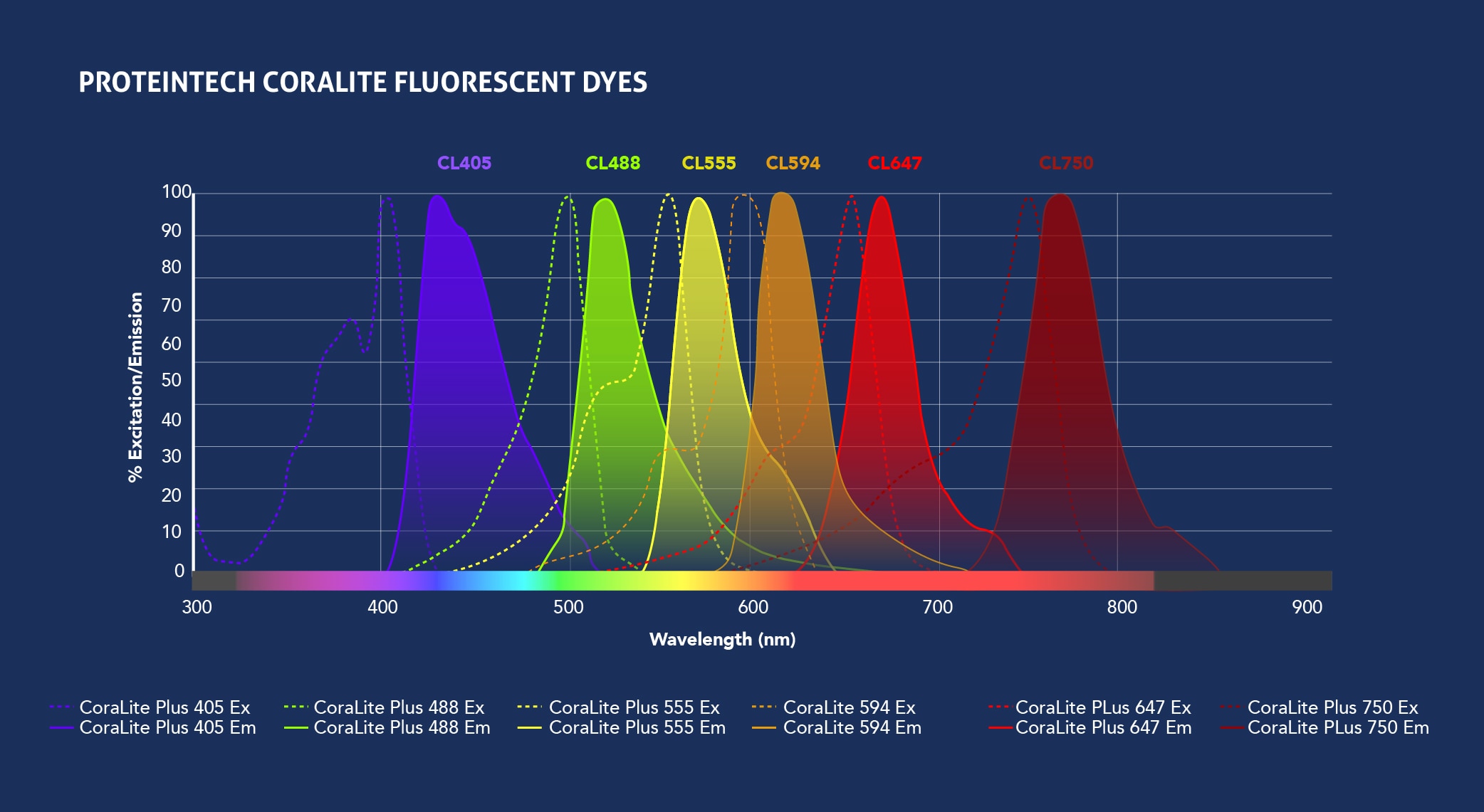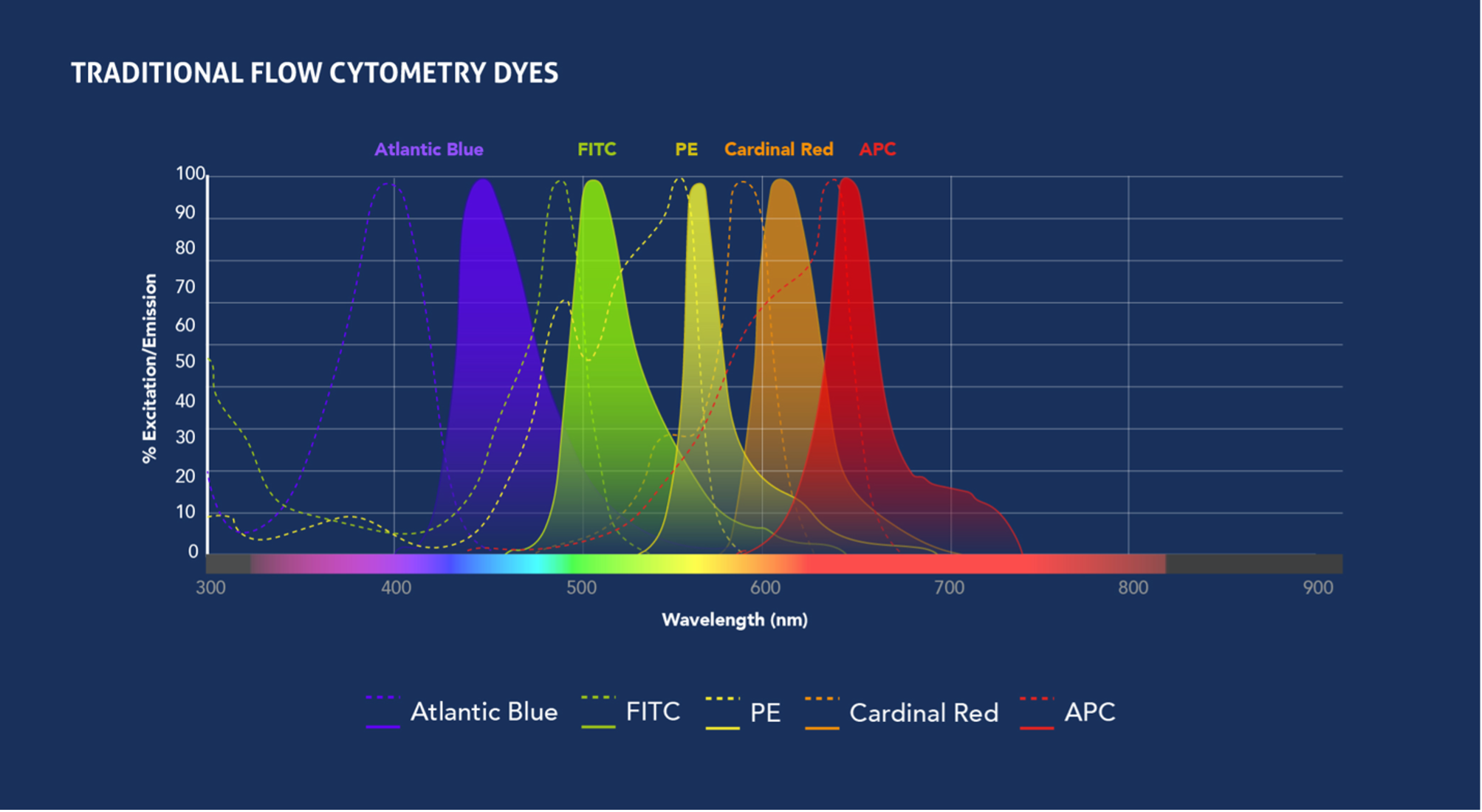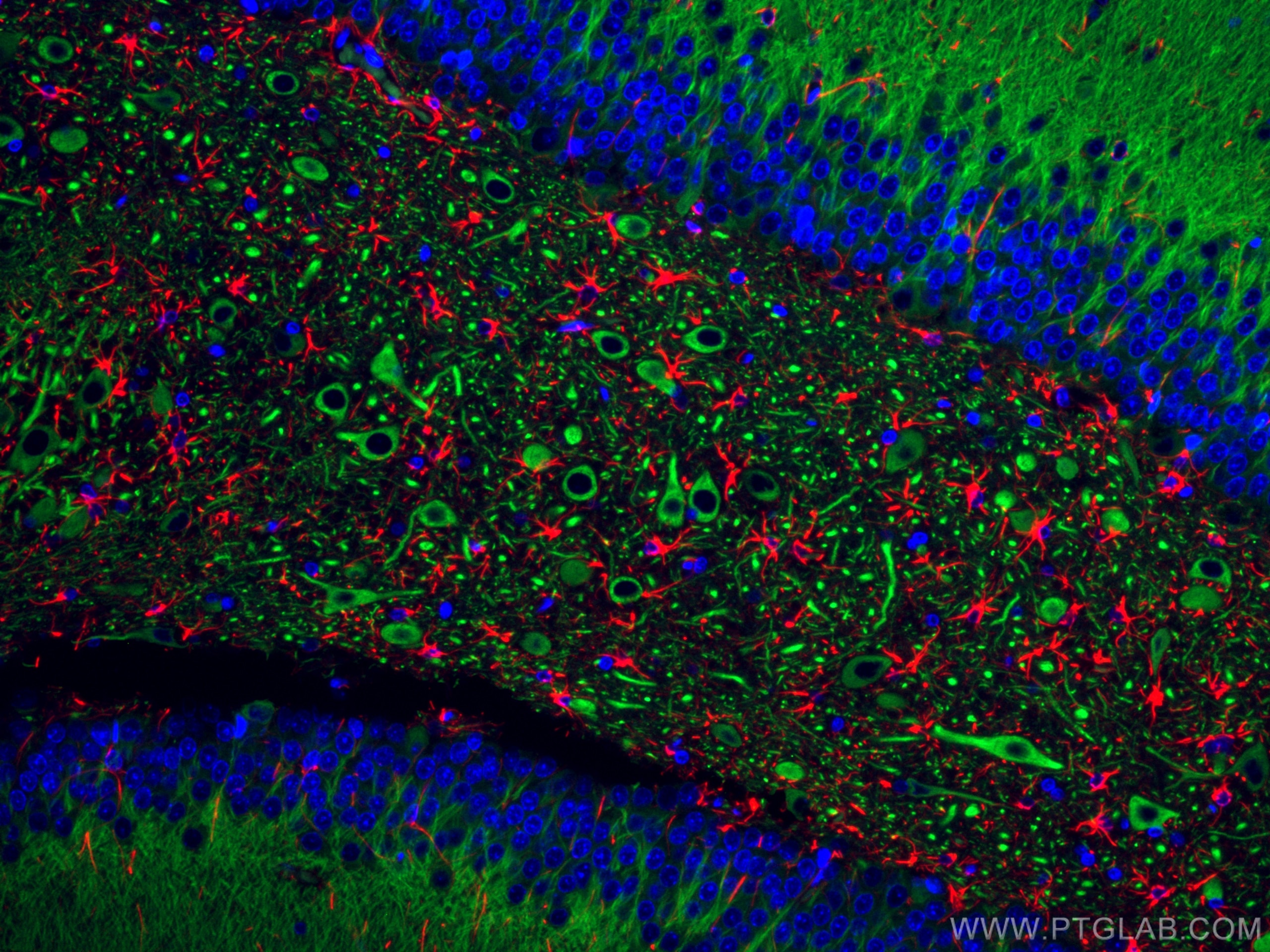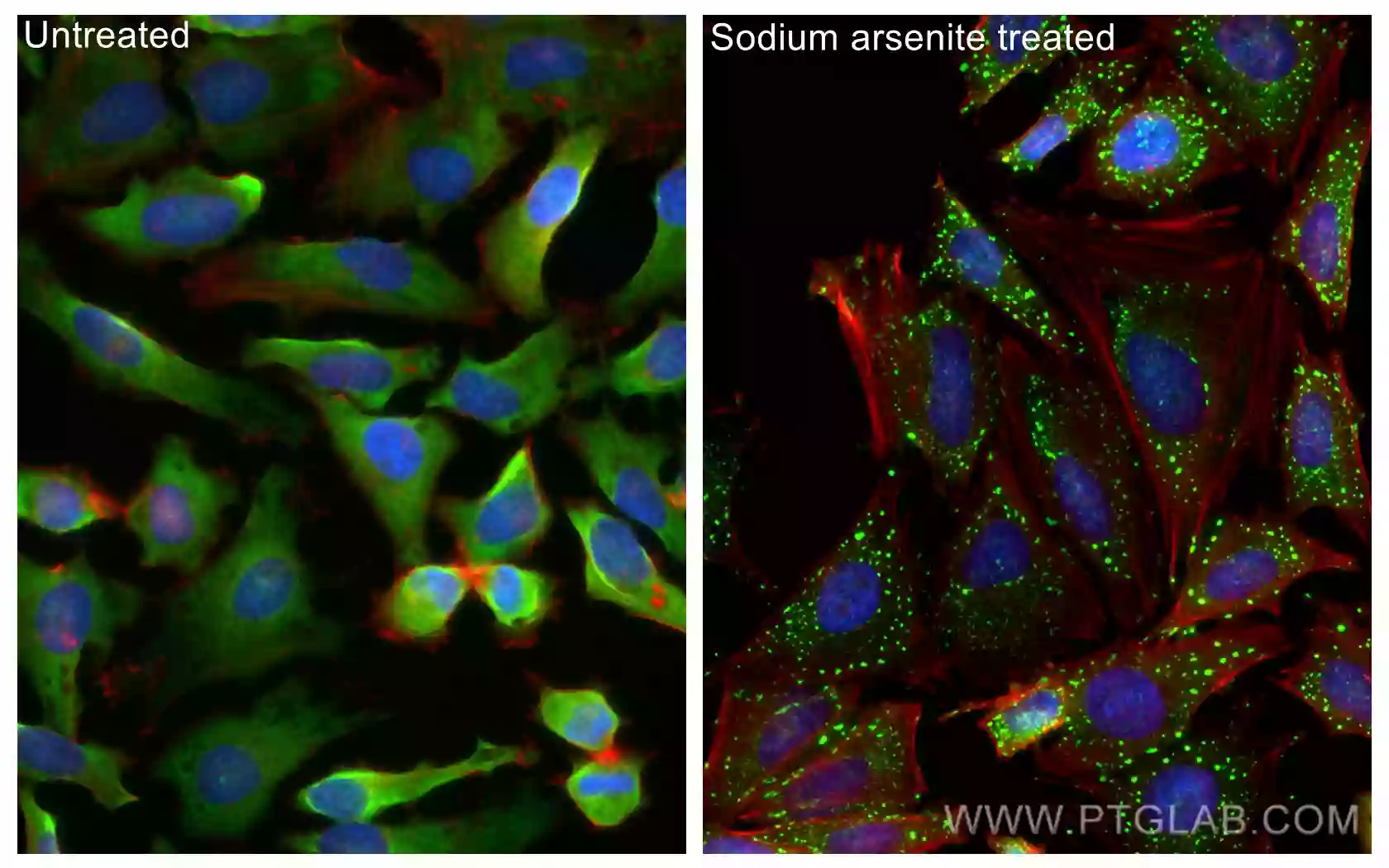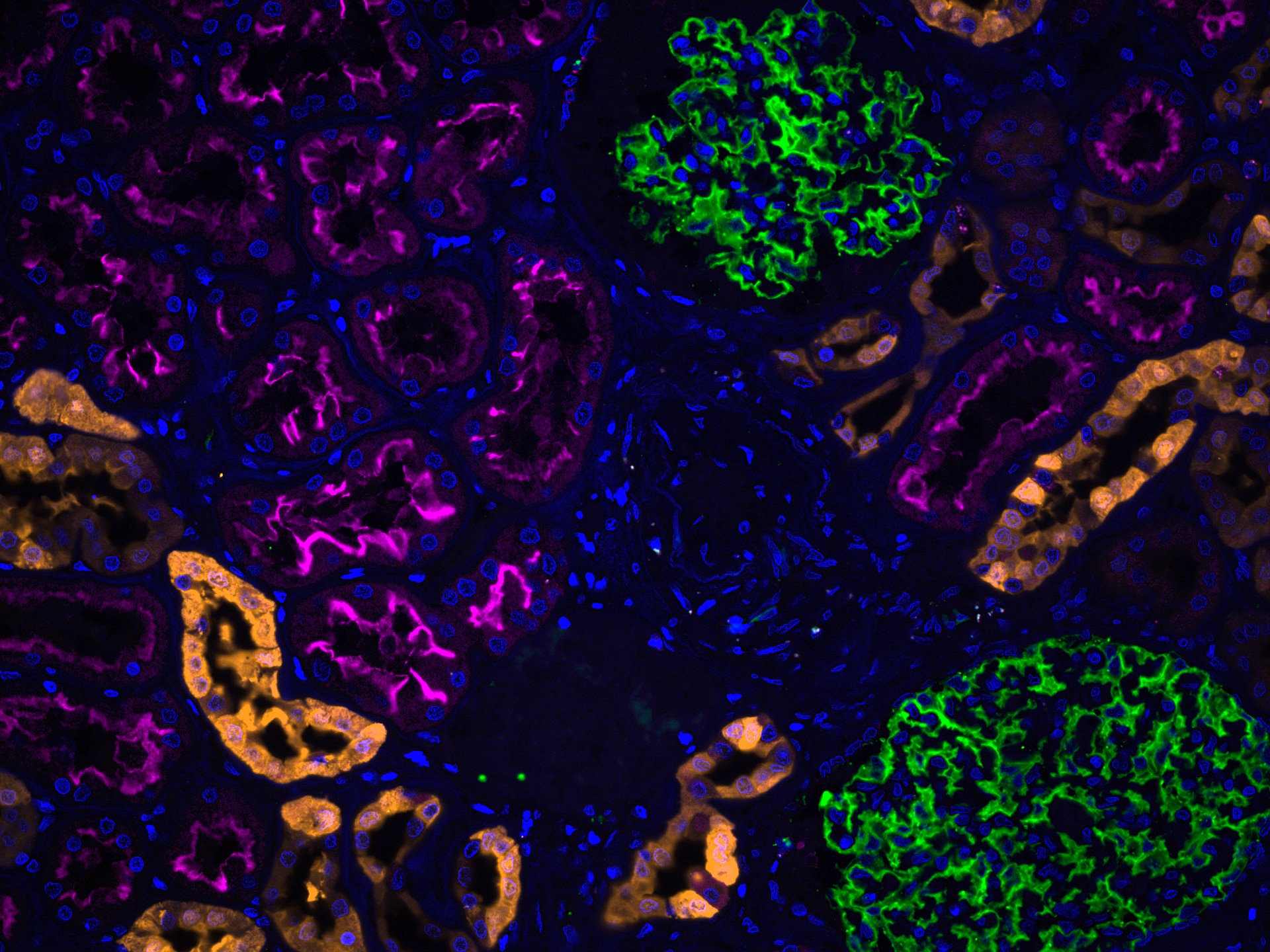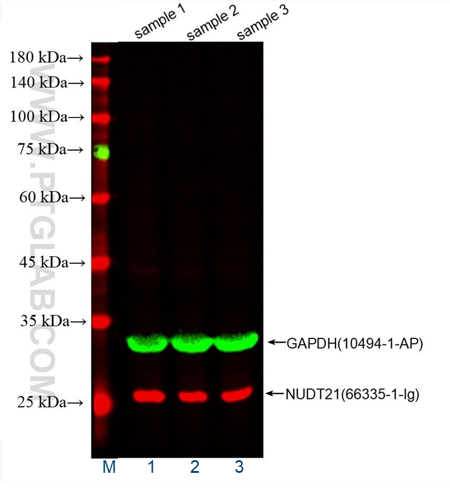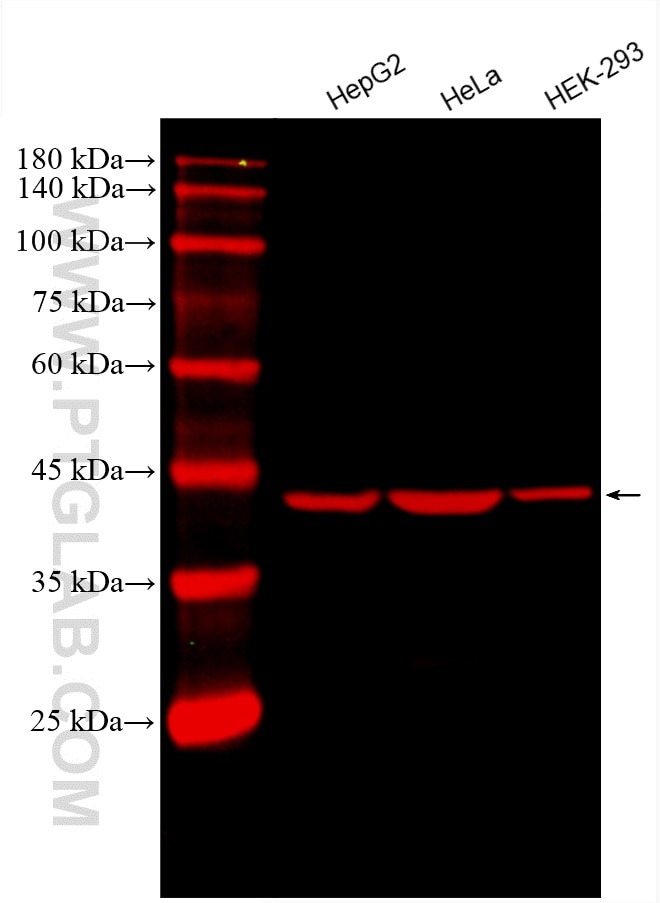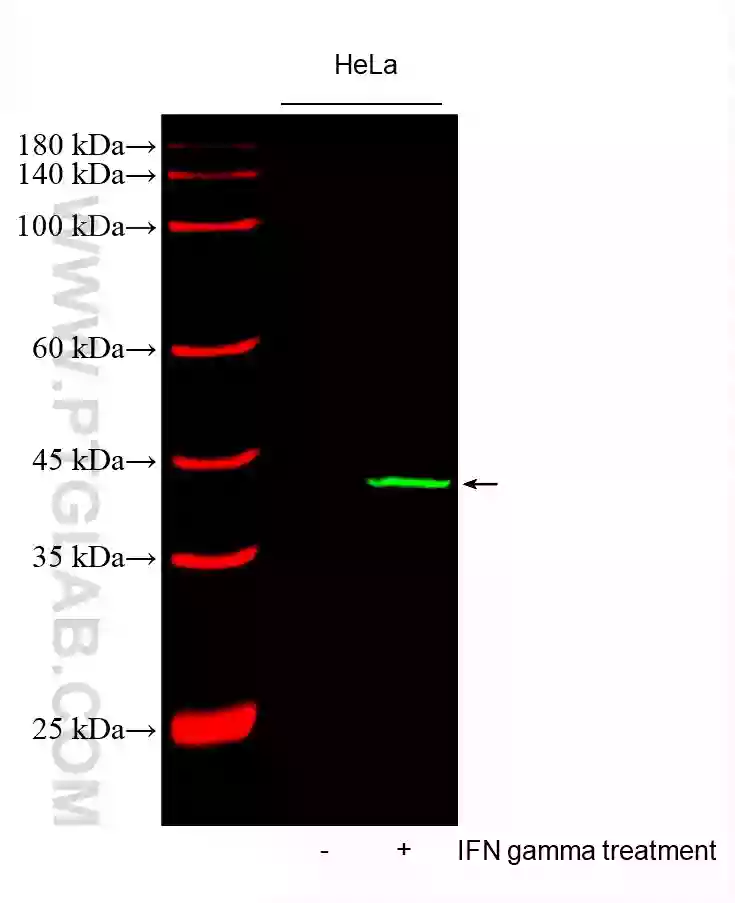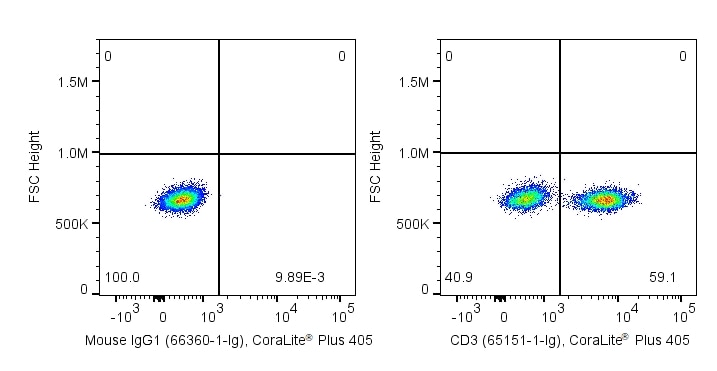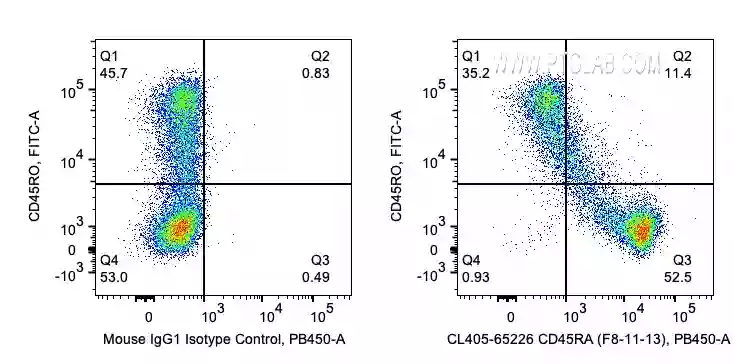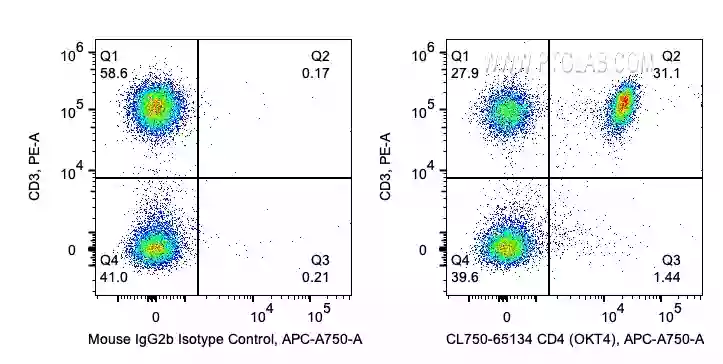CoraLite® Plus Fluorescent Dyes
Illuminate your research
CoraLite® Plus dyes, developed with SuperHydrophilic dPEG® technology, are advanced fluorophores with unmatched brightness and photostability
Immunofluorescence
CoraLite® Plus dye-conjugated primary antibodies offer a better signal-to-background ratio and higher sensitivity in immunofluorescence experiments.
View all CoraLite conjugated antibodies for IFFlow Cytometry
CoraLite® Plus dye-conjugated primary antibodies for flow cytometry cover a wide range of wavelengths for easier multiplex panel design.
View all CoraLite conjugated antibodies for FCAntibody Labeling
CoraLite® Plus dyes can be conjugated to any antibody from any supplier within 10 minutes using our FlexAble antibody labeling kit.
Learn more about FlexAble Antibody Labeling KitsCoraLite® Plus dyes – A game-changing technology for fluorescence applications
Proteintech introduces CoraLite® Plus dyes, chemically engineered with SuperHydrophilic dPEG® groups for greater biocompatibility and high water solubility. This technology facilitates unmatched improvements in brightness and photostability. CoraLite® Plus dyes are spectrally similar to Alexa Fluor® dyes.
CoraLite® Plus makes low-abundance targets light up and every precious sample count. CoraLite® Plus dye-conjugated antibodies yield greater signal-to-noise ratios with minimal nonspecific binding. This results in higher specificity and intensity for fluorescent imaging, flow cytometry, and western blotting applications.
CoraLite® Plus dyes - Spectral Features
| Dyes |
Excitation (nm) |
Emission (nm) |
Extinction Coefficient (cm-1 M-1) |
Spectrally similar dyes |
|---|---|---|---|---|
| CoraLite® Plus 405 | 399 | 422 | 35K | Alexa Fluor® 405 |
| CoraLite® Plus 488 | 493 | 522 | 73K | Alexa Fluor® 488, FITC |
| CoraLite® Plus 555 | 554 | 570 | 150K | Alexa Fluor® 555, Cy3, DyLight® 550 |
| CoraLite® Plus 647 | 654 | 674 | 250K | Alexa Fluor® 647, Cy5, DyLight® 650 |
| CoraLite® Plus 750 | 755 | 780 | 240K | Alexa Fluor® 750, Cy7, DyLight® 755 |
What is dPEG?
PEGylation is the process of covalently attaching polyethylene glycol (PEG) chains to various molecules like fluorophores to increase their hydrodynamic volume, water solubility and stability. dPEG® (discrete PEG) are molecules with a defined number of ethylene oxide units, thus giving them a specified chain length, molecular weight, and purity compared to traditional PEG with varying sizes and molecular weights. Varying sizes of PEG molecules leads to steric hindrance and other problems like binding/interaction site issues, which result in significant losses of intended activity.
CoraLite vs CoraLite Plus
Proteintech offers a range of antibodies conjugated to conventional sulfonated dyes, such as CoraLite®. The main difference between CoraLite® and CoraLite® Plus is that CoraLite® do not contain PEG molecules in their dye backbone.
Both classes of fluorophores have similar excitation-emission spectra and are comparable to Alexa Fluor® dyes.

Advantages of antibody conjugation with CoraLite® Plus dyes
Bioconjugation methods that use aliphatic or hydrophobic linkers for coupling biomolecules often cause problems in the final product due to nonspecific interactions between linker arms. SuperHydrophilic dPEG® technology can significantly improve final conjugate quality by improving specific interactions
Conventional Dye Conjugation
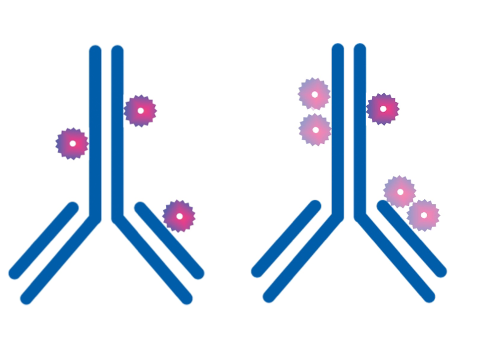
- Lower Degree of Labeling (DOL)
- Higher DOL results in dye-dye quenching
- Conjugates are more likely to aggregate or precipitate during labeling or storage
- Conjugates have more nonspecific binding
- Higher background
Antibody Conjugation with CoraLite® Plus
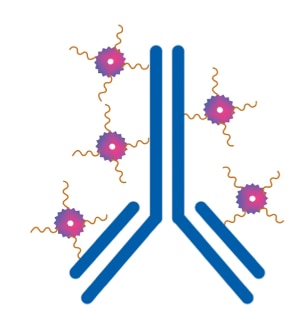
- High Degree of Labeling (DOL)
- Low levels of dye-dye quenching
- No aggregation or precipitation of labeled molecules
- Conjugates have less nonspecific binding
- Greater signal-to-background ratio
dPEG® technology improves the conjugation efficiency and brightness of conventional dyes
SuperHydrophilic dPEG® technology enhances traditional dyes by decreasing negative charge and increasing hydrophilicity. This results in a greater degree of labeling and significantly increased brightness, even for traditional dyes such as FITC, Pacific Blue™, and Texas Red.
FITC vs FITC Plus degree of labeling
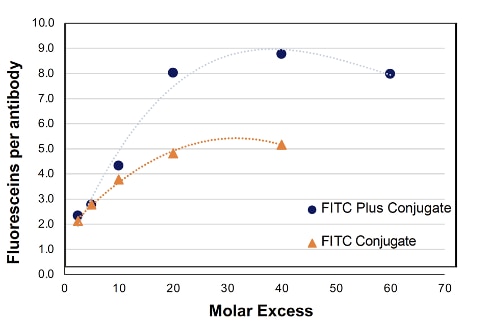
- Conjugation with FITC Plus dye shows a higher degree of labeling compared to old-generation FITC.
FITC vs FITC Plus brightness
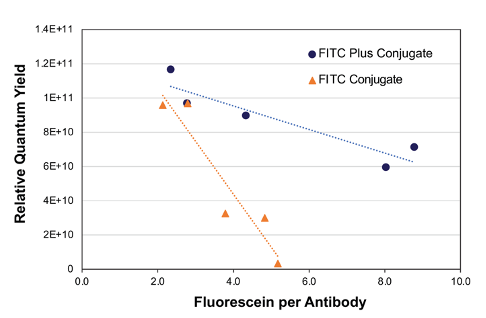
- FITC Plus conjugated antibody displayed significantly greater quantum yield (and brightness) at all levels of DOL compared to FITC-conjugated antibody alone.
Proteintech also offers conventional dyes for flow cytometry application
- The spectral properties of Atlantic Blue are similar to Pacific Blue™.
- The spectral properties of Cardinal Red are similar to Texas Red.
| Dyes |
Excitation (nm) |
Emission (nm) |
Extinction Coefficient (cm-1 M-1) |
Spectrally similar dyes |
|---|---|---|---|---|
| Atlantic Blue™ | 404 | 458 | 19K | Pacific Blue™ |
| FITC/FITC Plus | 495 | 524 | 76K | Alexa Fluor® 488 |
| PE | 566 | 574 | 1,960K | Alexa Fluor® 555, Cy3, DyLight® 550 |
| Cardinal Red™ | 592 | 611 | 80K | Alexa Fluor® 594, Texas Red® |
| APC | 650 | 661 | 700K | Alexa Fluor® 647, Cy5, DyLight® 650 |
CoraLite Plus-conjugated antibodies show exceptional performance in various applications
Related Content
Spectra Viewer
Plan and design your multicolor panel experiments using our Spectra Viewer to view the excitation and emission of different fluorophores.
Go with the Flow - Make the most of this powerful technique
Discover all the ways flow cytometry can be used to take your research further.
Multiplexing with Same-Species Antibodies for Immunofluorescence
Improve your IF multiplexing with these expert tips.
Alexa Fluor® is a registered trademark of Life Technologies Corporation.
DyLight® is a trademark of Thermo Fisher Scientific, Inc. and its subsidiaries.
Pacific Blue™ is a trademark of Molecular Probes, Inc.
dPEG® is a trademark from Quanta Biodesign Ltd
